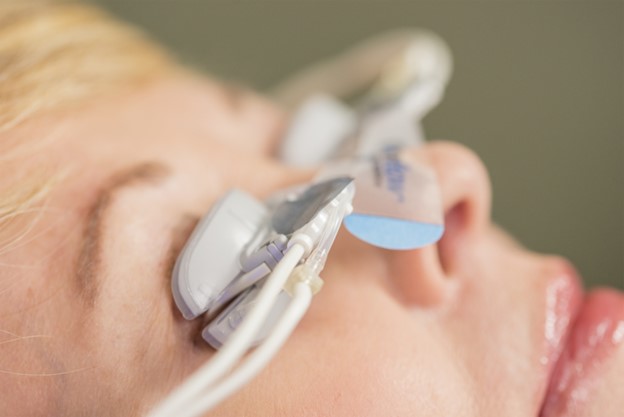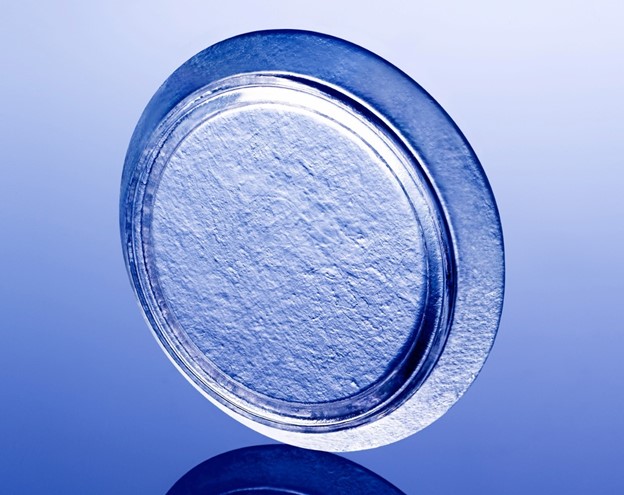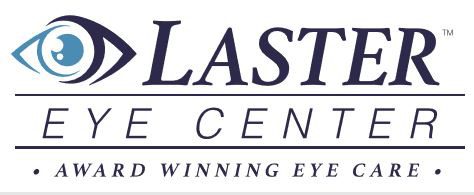Dry Eyes & Corneal Disorders
How Do We Treat Dry Eyes?
Here at Laster Eye Center, our doctors have developed an in-office treatment regimen that will lead to a healthier ocular surface and relief from dry eye symptoms. This regimen includes our IPL and LipiFlow treatments. We are also able to prescribe dry eye drops such as Xiidra, Restasis, and Cequa. Our doctors provide at-home tips and tricks to keep dry eyes under control. If you suffer from dry eyes, schedule a consultation with our doctors to see how we can help you.
Intense Pulsed Light (IPL)
With IPL technology, light pulses penetrate the tissue and create heat, targeting the abnormal vessels that are the root cause of the inflammation. The body’s natural reaction to the treatment removes the abnormal vessels and heals the inflammation threatening the skin an eyelid. The heat from the emitted light also works to loosen the oil in your Meibomian glands, leading to a more calibrated tear film.
To ensure utmost comfort, coupling gel will be applied on the treatment area. For your eyes’ safety, you will be wearing IPL protective goggles/pads during the whole treatment session. Each session lasts approximately 15 minutes. During the treatment, you might experience a warm sensation as light is applied to the skin, but the treatment is gentle and should not feel uncomfortable. Following the IPL treatment, your Meibomian glands will be expressed to accelerate your skin and eyelid healing process.
Immediately following treatment, you may experience some redness around treated areas that will usually disappear within a few hours. In most cases, makeup may be applied immediately, and daily activities can be resumed the same day. We recommend avoiding prolonged sunlight for the week after your procedure and to wear at least an SPF30 sunscreen.
Skin and eyelid inflammation can be relieved with as few as 1-2 treatments. 4 sessions with 3-4 weeks in between are needed to achieve optimal results. After completing the full treatment regimen, it is recommended to consult your physician on maintenance treatments for optimal long-term results (usually once every 6-12 months).

LipiFlow®
LipiFlow® is a treatment device specifically designed for effectively removing blockages from the meibmomian glands, allowing them to properly function and produce the oils that make up the top protective lipid layer of the tear film.
LipiFlow® activators are single-use sterile devices that safely and comfortably deliver automated therapeutic energies to the Meibomian glands, while protecting the delicate structures of the patient’s eye. The activators are specifically designed to be placed under and over the eye lids and are contoured above the cornea, so that the activators themselves avoid contact with the core eye surface. The placement of the activators on the eyes and treatment is a simple process that is done with minimal discomfort.

PROKERA®
PROKERA® is a therapeutic device used by eye doctors around the world to protect, repair and heal damaged eye surfaces. PROKERA® is made by clipping a piece of amniotic membrane tissue in between two rings made out of a clear, flexible material.
What is amniotic membrane tissue?
Amniotic membrane is part of the placenta and is the tissue closest to the baby throughout development in the womb. Amniotic membrane protects the baby from any harm and has natural therapeutic actions which help the baby develop. The tissue has healing properties that aid in ocular surface repair.
What does PROKERA® do?
What does PROKERA® treat?
How Do We Treat Dry Eyes?
Here at Laster Eye Center, our doctors have developed an in-office treatment regimen that will lead to a healthier ocular surface and relief from dry eye symptoms. This regimen includes our IPL and LipiFlow treatments. We are also able to prescribe dry eye drops such as Xiidra, Restasis, and Cequa. Our doctors provide at-home tips and tricks to keep dry eyes under control. If you suffer from dry eyes, schedule a consultation with our doctors to see how we can help you.
Intense Pulsed Light (IPL)
With IPL technology, light pulses penetrate the tissue and create heat, targeting the abnormal vessels that are the root cause of the inflammation. The body’s natural reaction to the treatment removes the abnormal vessels and heals the inflammation threatening the skin an eyelid. The heat from the emitted light also works to loosen the oil in your Meibomian glands, leading to a more calibrated tear film.
To ensure utmost comfort, coupling gel will be applied on the treatment area. For your eyes’ safety, you will be wearing IPL protective goggles/pads during the whole treatment session. Each session lasts approximately 15 minutes. During the treatment, you might experience a warm sensation as light is applied to the skin, but the treatment is gentle and should not feel uncomfortable. Following the IPL treatment, your Meibomian glands will be expressed to accelerate your skin and eyelid healing process.
Immediately following treatment, you may experience some redness around treated areas that will usually disappear within a few hours. In most cases, makeup may be applied immediately, and daily activities can be resumed the same day. We recommend avoiding prolonged sunlight for the week after your procedure and to wear at least an SPF30 sunscreen.
Skin and eyelid inflammation can be relieved with as few as 1-2 treatments. 4 sessions with 3-4 weeks in between are needed to achieve optimal results. After completing the full treatment regimen, it is recommended to consult your physician on maintenance treatments for optimal long-term results (usually once every 6-12 months).
LipiFlow®
LipiFlow® is a treatment device specifically designed for effectively removing blockages from the meibmomian glands, allowing them to properly function and produce the oils that make up the top protective lipid layer of the tear film.
LipiFlow® activators are single-use sterile devices that safely and comfortably deliver automated therapeutic energies to the Meibomian glands, while protecting the delicate structures of the patient’s eye. The activators are specifically designed to be placed under and over the eye lids and are contoured above the cornea, so that the activators themselves avoid contact with the core eye surface. The placement of the activators on the eyes and treatment is a simple process that is done with minimal discomfort.
PROKERA®
PROKERA® is a therapeutic device used by eye doctors around the world to protect, repair and heal damaged eye surfaces. PROKERA® is made by clipping a piece of amniotic membrane tissue in between two rings made out of a clear, flexible material.
What is amniotic membrane tissue?
Amniotic membrane is part of the placenta and is the tissue closest to the baby throughout development in the womb. Amniotic membrane protects the baby from any harm and has natural therapeutic actions which help the baby develop. The tissue has healing properties that aid in ocular surface repair.
